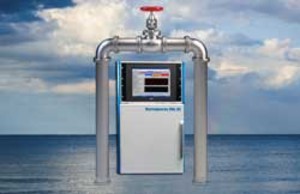

|
Edward Lowton
Editor |


|
Getting the measure of an invisible problem
25 April 2016
Water vapour doesn't just sneak around the edge of seals to get into places it shouldn't, it can permeate through the fabric of seals, mastics, gaskets and valves, sometimes in large volumes. Versaperm's measurement equipment lets users test and develop a design to check the effect of the manufacturing techniques and materials used.

Many materials are a good barrier against liquids, but when it comes to vapours, which are usually invisible, they are often very poor barriers. Versaperm's measurement system is fast and offers a simple, accurate way to measure vapour permeability, not just for water vapour but for hydrocarbon vapour and most other gases including hydrogen, oxygen, solvents and CO2.
Results are accurate in the parts per million range for most materials and enclosures and it is possible to characterise several separate material samples, seals or enclosures at one time – sometimes in just 30 minutes.
As well as manufacturing the instruments, Versaperm offers a permeability laboratory service for companies that need to test samples on an irregular basis.
- Avoid head in sand approach to packaging testing
- Fast & accurate results
- Vapour permeability systems
- Sustainability: making low energy textiles breathable
- Vapour permeability measurements
- Vapour permeability of plastics
- Extreme temperature or pressure products and vapour permeability issues
- Fast gas permeability meter
- Semi-permeable membranes
- QC for damaging contaminate(s)
- No related articles listed


















